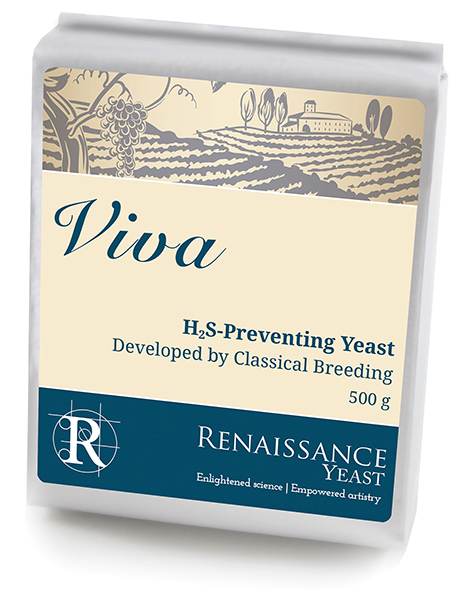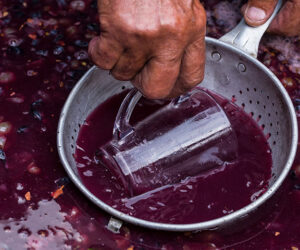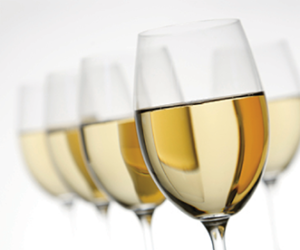
Q
For the last two vintages, my Chardonnay, fully dry and through partial MLF (stopped with SO2) went into the bottles after a few months of settling and a couple of rackings. I Add inert gas while aging as well as keeping it topped up in the carboys and now my new variable volume tank. At bottling it always smells fine, but in about 3 months, it develops swampy, reductive odors. A day sitting in open air resolves the smell, but it’s awkward to give a bottle away and have to tell the recipient why it smells bad and how to fix it. Any advice on how to prevent this next year?
Jeff Griffin
Felton, California
A
Your question about how to avoid a swampy, reductive odor in your Chardonnay after bottling is an interesting one. For readers who may not be aware, “reductive” is a non-exact sensory term often used to signal rotten egg or hydrogen sulfide-type aromas. Hydrogen sulfide in wine can be caused by a few different things but is most often produced by Saccharomyces cerevisiae during fermentation, usually due to a nutrient or amino acid deficiency. Since you don’t specifically mention rotten eggs here, and because you say your wine smells fine right before bottlings, I’ll assume we’re not talking about a classic “rotten egg” hydrogen sulfide problem.
Ruling out hydrogen sulfide and the related mercaptan and sulfide-containing compounds that are corollary defects, I’m assuming you’re talking “swampy and reductive” in a more general sense. Not knowing more particulars is tough, but since the defect seems to be catalyzed when you bottle your wine, let’s investigate a few areas.
First, don’t bottle your wine too soon. Sometimes, right after harvest, I go to the winery and want to take a 750 mL bottle of a tank sample home over the weekend for later analysis. I pull a 750 mL bottle of a newly-fermented wine (just dry and sulfured), leave about two inches headspace, cap it tightly, and then take it home with me. When I open the sample a day later, I smell a reductive hydrogen-sulfide like aroma and when, worried, I run back to smell the tank, the tank smells fine. Similarly, when I pour the sample from the bottle into a glass and let it sit for a few minutes, the worrisome aroma blows off. What I think happens here is that new wine (think: slightly spritzy, full of dissolved CO2, slightly cloudy) is in a very reductive state and further robbing it of oxygen by capping up the bottle pushed it over an edge. The redox potential of the wine shifts towards the conditions being right for the release of these sulfur-containing off aromas. Add oxygen (open the bottle, swirl a glass) and the aromas go away. Apply this scenario to a wine that’s closer to bottling and you can see that the same thing might happen. It’s possible that your wine is too reductive, which is easier to arrive at if your wine hasn’t had enough oxygen exposure over its lifetime, i.e. that you’re bottling it too soon. Try waiting another month or two, and possibly give it another racking, before bottling.
Second, try a different yeast strain. Some strains naturally produce more sulfur-containing off-aromas and off-aroma precursors than others. If this swampy defect that you notice after bottling happens often, you may want to consider switching up your yeast strain. I use a lot of PDM/EC1118 and never have had this problem. You could also try the relatively new strains from the Renaissance Yeast company, which were naturally bred to not produce any H2S (see “Techniques” column in this issue).
Finally, try (carefully) using a little more oxygen in your winemaking process. You might want to try gradually introducing a little more oxygen into your winemaking process, especially early on when wines are more resilient to shifts in redox potential. Be sure to separate heavy lees quickly from your young wine. Maybe add in another racking at around 6 months of age. Don’t bottle too early; Chardonnays can take, and indeed need, roughly 6-12 months of aging. If you plan on long-term aging on the lees be sure to perform a bâtonnage. You don’t want to purposefully add a lot of oxygen, but too little oxygen at bottling can lead to a decrease in the redox potential, which in turn can cause the release of reductive off aromas.
Q
Has anyone tried Making wine using essential oils as flavor or aroma highlights? How would this work and if it could be done, at what point would you add the oil of choice?
Dennis Green
Sheridan, Wyoming
A
You can certainly experiment with essential oils in your winemaking if you remember the old adage that “oil and water don’t mix.” Essential oils are the natural distilled volatile aroma compounds from fruit, leaves, and flowers, and are used in the perfume and cosmetics industries, among others. Essential oils are easy to find online or in health food stores and are relatively inexpensive, costing between $10-$15 for a small 1 oz. (30 mL) bottle. The most common essential oils include lavender, peppermint, and rosemary, but a huge host of oils is available online.
Why would anyone want to use essential oils in winemaking? As you suggest, it might be interesting to add some additional flavor and aroma highlights to your wines. However, be advised that since the molecular weight of most essential oils are so low, what’ll happen is the oils will actually “sit on top” of your wines, and not truly absorb or mix into solution. It’ll be as though you’ll have an actual oil slick on top of your carboy or wine bottle. Open a bottle of wine with essential oils on top and you’ll likely pour most of the oil off into the first glass, making that first whiff a doozy for whoever sticks their nose in.
Essential oils also evaporate quickly, meaning that if you put some oils into a barrel with your wine in it, much of the oil’s potency will be lost by a) absorbing into the wood and b) volatilizing (evaporating) into the air. Not very effective. So do oil and wine mix? Not so much. I’d leave the essential oils to perfumers and aromatherapists or when dealing with high-alcohol solution for making herbaceous apertifs. I suggest mixing some lavender essential oil with some unscented almond or olive oil and make a massage rub for yourself. After all, oil and oil do mix.
Q
I am looking for an equation for calculating the residual sugar (RS) in store-bought wine when I know:
1. Temperature of wine (from instant-on thermometer),
2. Specific gravity of wine (from hydrometer),
3. % ethanol of wine (from bottle label)
Frank Dawson
Southlake, Texas
A
That’s certainly an interesting question and one for which the short answer is “no such equation exists.” The longer answer attempts to help explain why, even though you think you should have all the parts that you need to solve for unfermented sugar. As I was considering whether to answer your question for this issue of “Wine Wizard” or not, I sent your question to WineMaker magazine Technical Editor and columnist Bob Peak. I was debating including the question in this column because I was afraid I would have to give you an unsatisfactory answer: It just can’t be done. However, as I read Bob’s response I changed my mind and realized that you and your fellow readers might be interested in why the answer is “impossible.” Before I give you my opinion, I’ll quote Bob’s response in full because it’ll help illuminate the challenge you pose above.
To quote Bob: “What an interesting question! The simple answer from me is, no, I don’t know an equation (for calculating RS based on the above given information) and I don’t think you can do it.
“In theory, a pure mixture of sucrose (simplifying from the glucose/fructose that is actually in wine) plus pure water plus pure ethanol, you might be able to do it. For instance, you know the ethanol content, so you can look up the expected density in a specific gravity/temperature chart like this www.separationprocesses.com/CourseWare/Experiments/Property01.htm. From that, you can look at the density you measured (if your hydrometer is precise enough!) and ascribe any higher density than the table as coming from dissolved sucrose. You could then look up that difference as though it were the three digits after a 1.xxx specific gravity (SG) (since you have accounted for the below-one by compensating for the ethanol) and look up the sugar content as Brix, or percent sugar by weight, in a chart like this www.winning-homebrew.com/specific-gravity-to-brix.html.
“So, for instance, if the first chart said your 13% alcohol wine at 68 °F (20 °C) should be 0.97775 SG, but you actually read 0.98175, your difference of 0.004 SG can be found at 1.004 in the second chart at 1.03 Brix, or about 1%.
“So, with all that cleverness, why do I think it can’t be done? Extract! Anyone who has ever filled out a Japan export form (government forms for selling wine in Japan), knows you have to include extract, defined as solids other than sugar in the wine. I think they require it to avoid synthetic imitation wine made from sugar, water, and ethanol. In a lab like Vinquiry (where I worked), we did the extract analysis by physically evaporating and weighing the residue from an aliquot of wine, running glu-fru (glucose plus fructose-ed) enzymatically, and subtracting to get extract. So the question as posed leaves no way to distinguish extract and sugar in the density difference (in real wine).”
Bob is absolutely right. The “extract” in wine consists of the solids left behind by minerals, tannins, and other wine components that aren’t sugar and in my experience can be significant enough, especially in tannic red wines, to throw off any attempt at getting to a residual sugar by specific gravity alone. Let’s also remember that with residual sugar in most table wines, we’re talking 0.2% (2 g/L) or less, which are small numbers. Using a hydrometer/specific gravity and the naked eye, even with a temperature correction, is a very imprecise way to get at density, especially when there are so many other things that could be contributing to that density other than sugar. This is why most winemakers, home hobbyists and otherwise, are always advised to use an alternative test like the Clinitest tablet method to check for the absence of fermentable sugars in wines that are measuring under 0.9995 by specific gravity or under -1.0 °Brix. Commercial winemakers get even more exact than the visual color-change Clinitest method, and do an enzymatic analysis at a professional wine industry laboratory.







